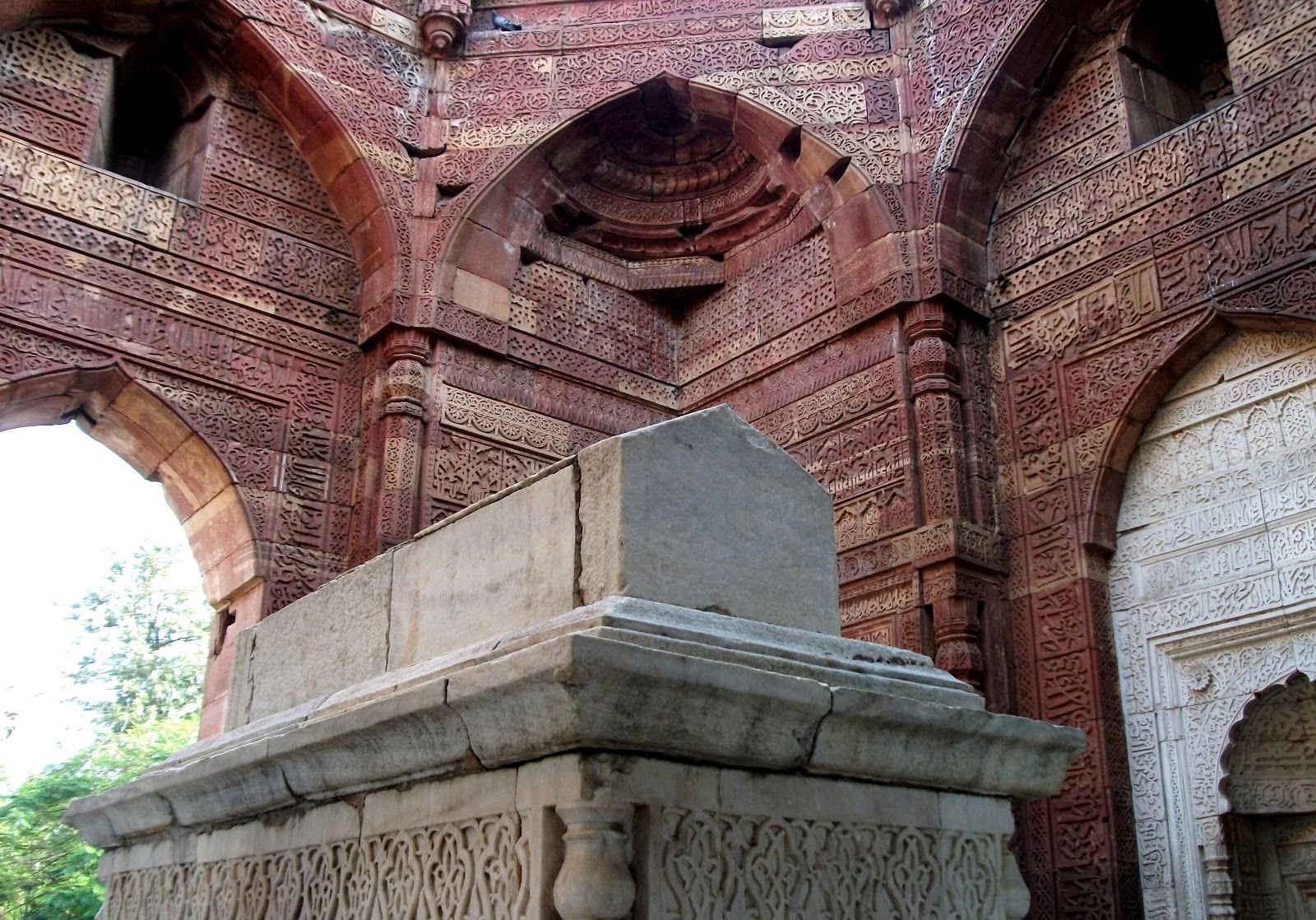Coming back to Delhi after 16 years and the first thing I do is to rush to visit the Qutb!
Somehow, this complex where a large number of remains from the 12th century abound, has held my attention as it has, I am sure, of countless others. In a way, it is the mascot of the national capital Delhi, the land of seven cities like the Shahjehanabad, Siri, Dinpanah, Tughlaqabad etc all of whom have disappeared behind the mists of time but the Qutb complex remains, reminding us of our unique heritage among all nations..
Somehow, this complex where a large number of remains from the 12th century abound, has held my attention as it has, I am sure, of countless others. In a way, it is the mascot of the national capital Delhi, the land of seven cities like the Shahjehanabad, Siri, Dinpanah, Tughlaqabad etc all of whom have disappeared behind the mists of time but the Qutb complex remains, reminding us of our unique heritage among all nations..
It was quite heartening to see that the Archaeological Survey of India has been improving upon the maintenance and restoration efforts, so much so that I did several rounds even as the mercury was touching 44 degrees C. Originally, the minar accompanied a mosque, the pillars of which were pilfered from 27 Hindu and Jain temples and the compound of the mosque was enlarged by Sultan Iltutmish and Alauddin Khilji successively. These enlargements are now clearly visible from an appropriate vantage point
That cute little dome was actually the first dome structure in India, called the Alai Darwaza.
Restoration efforts are painstaking and slow, and is still going on after several decades. Loved the sheer presence of the structure, the symmetry and the vision. I am sure you would too, once you visit!
This was most probably the original entry to the Qutb, hoary cenuries ago. Nowadays, this particular vista lies at the back, but the powerful presence of the sublime makes itself felt, nonetheless. I was a bit disappointed that the way to the tomb of Kamali - Jamali has been closed by a boundary wall, 180 degrees from here. But then, the place where I sat contented and looked at he Qutb minar was so secluded and peaceful with only the birds to keep me company ..
Couldn't help going round once again! That is a view from the galleries of the mosque.
It would not be fair to leave out the other beauties in the Qutb complex, even though my intention was to depict the minar by itself, resplendant in its own glory. So this is the Mughal Masjid, in front of a small patch of garden laid out in neat quadrants
A chhajjah, or a crowned pavilion which often served as a look out post
It is recorded that the infamous Alauddin Khilji wanted to build a minar twice as large as the Qutb minar. Was it just competition for the sake of competition? Was it a hunger for lasting fame? In that, he did sure fail miserably, for this is what remains of his effort, a 26 metre high unfinished edifice
In one corner, lies the tomb of Sultan Iltutmish, who ruled after Qutbuddin Aibaq. By all means, a gentle soul and a regal personage who never forgot his humble origins, and the father of Sultana Razia, who dared to defy the veil and hold a public audience nine centuries ago
Major R Smith of the Royal Engineers repaired the cupola of the minar in 1802, when it was struck down by lightning, but he did it like a chhatri which was later removed by Governor General Lord Hardinge. And so it lies on the lawns outside the minar
There is also a sundial in front of the cupola, called Sandersons' sundial, erected in memory of one of the Superintendants of Archaeology, who carried out extensive excavations in and around the area.
The mosque is spread over a large area and offers wonderful views from different angles
The Hindu style of architecture is clearly visible in these colonnaded galleries of the mosque
Only the arches remain of the screens at the western end of the mosque. The difference in periods of construction is visible to the trained eye.
A close up of the frieze on one of the screens. Of muslim motif, but clearly done by the hindu craftsman
Its strange that the central courtyard houses the Iron Pillar, erected by the Emperor Chandragupta II circa 500 AD. There are inscriptions on the iron pillar which have been deciphered and translated and put up on tablets. Fifteen centuries, and not a speck of rust!
Noticed a falcon sitting atop a tree and surveying the land
And a squirrel, hunting for bits and pieces left on the grass!
Into the earth, where we belong, we must go.
And the earth shall sustain us and nourish us and our offspring who must honour and love all her children, the animate and the inanimate, all of the same breath!

























What remarkable architecture, and all done by human hand at great physical cost, I have no doubt. I love the rounded tower. And the markings on the various structures are astounding. So intricate and beautiful. Thank you for showing me glimpses of your favourite spots as you Ramble around.........you never fail to amaze me with your photos.
ReplyDeleteTruly amazing architecture! We have nothing to compare here in the US so it's wonderful to be able to travel to India via your blog!
ReplyDeletevery good shots, soumen
ReplyDelete